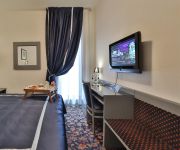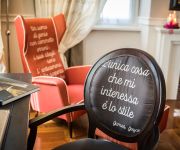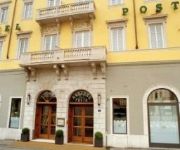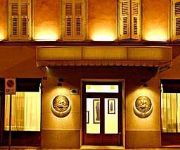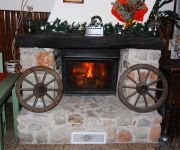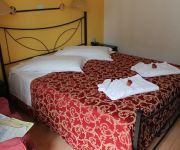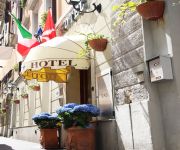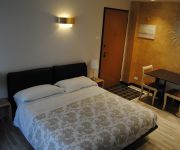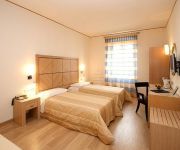Safety Score: 3,0 of 5.0 based on data from 9 authorites. Meaning we advice caution when travelling to Italy.
Travel warnings are updated daily. Source: Travel Warning Italy. Last Update: 2024-08-13 08:21:03
Touring Guardiella
The district Guardiella of Trieste in Provincia di Trieste (Friuli Venezia Giulia) is a subburb located in Italy about 268 mi north of Rome, the country's capital place.
Need some hints on where to stay? We compiled a list of available hotels close to the map centre further down the page.
Being here already, you might want to pay a visit to some of the following locations: Zolla, Muggia, Dolina, Sezana and Sgonico. To further explore this place, just scroll down and browse the available info.
Local weather forecast
Todays Local Weather Conditions & Forecast: 12°C / 54 °F
| Morning Temperature | 6°C / 43 °F |
| Evening Temperature | 10°C / 49 °F |
| Night Temperature | 10°C / 50 °F |
| Chance of rainfall | 0% |
| Air Humidity | 62% |
| Air Pressure | 1017 hPa |
| Wind Speed | Light breeze with 4 km/h (2 mph) from North-East |
| Cloud Conditions | Clear sky, covering 9% of sky |
| General Conditions | Sky is clear |
Monday, 18th of November 2024
12°C (53 °F)
12°C (53 °F)
Overcast clouds, light breeze.
Tuesday, 19th of November 2024
12°C (54 °F)
11°C (52 °F)
Light rain, light breeze, overcast clouds.
Wednesday, 20th of November 2024
12°C (54 °F)
7°C (44 °F)
Light rain, fresh breeze, overcast clouds.
Hotels and Places to Stay
San Giusto Residence
Victoria Hotel Letterario
Alla Posta
Colombia
La Valle di Banne
Centrale
Italia
Al Viale
Residence Sole
Roma
Videos from this area
These are videos related to the place based on their proximity to this place.
Passepartout - Philippe Daverio - Trieste (in onda il 24/10/2004)
Il 26 ottobre 1954, con l'arrivo dell'esercito italiano in città, Trieste tornava all'Italia dopo quasi nove anni di amministrazione angloamericana. «Passepartout» festeggia questo evento....
Trieste Turismo - Trieste, città fascinosa
Trieste una città unica. Storia e di fascino, tra gli asburgici edifici di Piazza Unità d'Italia e il mare che lambisce il Molo Audace. http://twitter.com/turismotrieste http://www.facebook.com/t...
Portopiccolo Sistiana Trieste 8-8-2014
DA " Il Piccolo" Sistiana Portopiccolo apre al pubblico: grande festa dalle 19 e fuochi d'artificio alle 22.30 Eventi a Trieste „Un'occasione unica per scoprire una città nuova, piena...
PALLANUOTO TRIESTE VS CIVITAVECCHIA SEMIFINALE
CAMPIONATO NAZIONALE SERIE A2 MASCHILE - PALLANUOTO TRIESTE VS CIVITAVECCHIA GIRONE NORD SEMIFINALE GARA 3 ************************* GRAZIE ISCRIVETEVI AL MIO CANALE ...
Videos provided by Youtube are under the copyright of their owners.
Attractions and noteworthy things
Distances are based on the centre of the city/town and sightseeing location. This list contains brief abstracts about monuments, holiday activities, national parcs, museums, organisations and more from the area as well as interesting facts about the region itself. Where available, you'll find the corresponding homepage. Otherwise the related wikipedia article.
Free Territory of Trieste
The Free Territory of Trieste was a city-state situated in Central Europe between northern Italy, Slovenia and Croatia, facing the North part of the Adriatic Sea, under direct responsibility of the United Nations Security Council in the aftermath of World War II. The Free Territory was established on 10 February 1947 by a protocol of the Treaty of Peace with Italy in order to accommodate an ethnically and culturally mixed population in a neutral independent country.
University of Trieste
The University of Trieste (Italian Università degli Studi di Trieste, UNITS) is a medium-sized university in Trieste in the Friuli-Venezia Giulia region of Italy. The university consists of 12 faculties, boasts a wide and almost complete range of university courses and currently has about 23,000 students enrolled and 1,000 professors. Founded in 1924, it is a relatively young institution compared to most other Italian universities.
Province of Trieste
The Province of Trieste is a province in the autonomous Friuli-Venezia Giulia region of Italy. Its capital is the city of Trieste. It has an area of 212 km², and a total population of 236,520 (April 2009). It has a coastal length of 48.1 km. There are 6 communes in the province.
International School for Advanced Studies
The International School for Advanced Studies (Italian: Scuola Internazionale Superiore di Studi Avanzati, SISSA) is an international, state supported, post graduate teaching and research institute with a special statute, located in Trieste, Italy. Instituted in 1978, SISSA's aim is to promote science and knowledge, particularly in the areas of Mathematics, Physics and Neuroscience. Each year about 70 Ph.D. students are admitted to SISSA based on their scientific qualifications.
Fincantieri
Fincantieri - Cantieri Navali Italiani S.p.A. is an Italian shipbuilding company based in Trieste, Italy. It was formed in 1959 and is the largest shipbuilder in Europe, and one of the largest in the world. The company has built both commercial and military vessels during its history.
Trieste Astronomical Observatory
The Osservatorio Astronomico di Trieste (Trieste Astronomical Observatory) is an astronomical center of studies located in Trieste, northern Italy. The observatory originates from the Nautical School founded in Trieste by the Empress Maria Theresia of Austria in 1753. Entered into the lists of Italian astronomical observatories in 1923, the Trieste Astronomical Observatory is presently part of the Istituto Nazionale di Astrofisica (National Institute for Astrophysics, INAF).
Stadio Nereo Rocco
Stadio Nereo Rocco is a football stadium in Trieste, Italy. It is currently the home of U.S. Triestina Calcio, named after former player and manager Nereo Rocco. The stadium holds 32,454.
Teatro Lirico Giuseppe Verdi
The Teatro Lirico Giuseppe Verdi is an opera house located in Trieste, Italy and named after the composer Giuseppe Verdi. Privately constructed, it was inaugurated as the Teatro Nuovo to replace the smaller 800-seat "Cesareo Regio Teatro di San Pietro" on 21 April 1801 with a performance of Johann Simon Mayr's Ginevra di Scozia. Initially, the Nuovo had 1,400 seats. By the end of the 18th century, the need for a new theatre in Trieste became evident.
Synagogue of Trieste
The Synagogue of Trieste is a Jewish house of worship located in Trieste, northern Italy.
Palatrieste
Palatrieste, officially known as Palazzo dello sport Cesare Rubini is an indoor sporting arena located in Trieste, Italy. Opened in 1999, it has a seating capacity for 6,943 people and is currently home for Acegasaps Trieste basketball team.
ELETTRA
ELETTRA Synchrotron Light Laboratory is a national synchrotron laboratory located in Basovizza on the outskirts of Trieste, Italy. The facility, available for use by the Italian and international scientific communities, houses several ultra bright light sources, which use the synchrotron and free electron laser (FEL) sources to produce light ranging from ultraviolet to X-rays.
Trieste Cathedral
Trieste Cathedral (Italian: Cattedrale di San Giusto), dedicated to Saint Justus, is the cathedral and main church of Trieste, in northern Italy. It is the seat of the Bishop of Trieste.
Port of Trieste
The Free Port of Trieste is a port on North Adriatic Sea in the Trieste, Italy. It is subdivided into 5 different Free Areas, 3 of which have been allotted to commercial activities. The remaining two, the Mineral Oils Free Area and the “Canale di Zaule” Free Area, are used for industrial activities. The port is articulated in various terminals, managed by private companies.
Opicina Tramway
The Opicina Tramway is an unusual hybrid tramway and funicular railway in the city of Trieste, Italy. It links Piazza Oberdan, on the northern edge of the city centre, with the village of Villa Opicina in the hills above. The tramway is closed for renovation from September 2012 to March 2013. For most of the journey, the line operates as a conventional, electrically powered tramway, with a mixture of street running and reserved track.
Civico Orto Botanico di Trieste
The Civico Orto Botanico di Trieste (90 hectares, cultivated area 10,000 m²) is a municipal botanical garden located at via Marchesetti 2, Trieste, Friuli-Venezia Giulia, Italy. The garden was established in 1842 when the city first experimented with plantations of the Austrian black pine. By 1861 a botanical garden began to take shape with species collected from the Julian Alps in Istria and Dalmatia.
Risiera di San Sabba
Risiera di San Sabba was a Nazi concentration camp for the detention and killing of political prisoners during World War II, located in Trieste, northern Italy. SS members Odilo Globocnik and Karl Frenzel, and Ivan Marchenko are all said to have participated in the killings at this camp. Erwin Lambert is claimed to have installed cremation facilities. Today the former concentration camp is dedicated as a civic museum.
Borgo Giuseppino
The Borgo Giuseppino is a neighbourhood of Trieste, northern Italy, planned and built starting from the end of the 18th century. The name comes from the Emperor of Austria Joseph II, Holy Roman Emperor, son of the empress Maria Theresa of Austria.
Caffè San Marco
Caffè San Marco is a historic café in Trieste, Italy. Founded in 1914, it became famous as a rendezvous for intellectuals including Italo Svevo, James Joyce and Umberto Saba.
Museo Sartorio
The Civico Museo Sartorio is a museum in Trieste, northern Italy. Set in an urban villa, it exhibits ceramics, majolica, porcelain and pictures, typical equipment of Trieste's villas at the end of the 19th century. Besides the villa itself being a very interesting building architecturally, it contains drawings of Giambattista Tiepolo and a glyptotheque. The museum opened to the public partially in 1949 and completely 1954. In 2006, the museum reopened after a period of renovation.
Piazza Unità d'Italia
Piazza Unità d'Italia (Unity of Italy Square in English) is the main town square in Trieste, Italy. It is situated at the foot of the hill containing the castle of San Giusto and the square faces the Adriatic Sea. The square is often said to be Europe's largest square located next to the sea. The square was built during the period when Trieste was the main port of the Austrian-Hungarian Empire and includes the city's municipal buildings and other important palaces.
Metres above the Adriatic
Metres above the Adriatic (German: Meter über Adria, Croatian: Metara iznad Jadrana) is the mean sea level datum used in Austria and some other Central and Southeast European countries to measure elevation referring to the average water level of the Adriatic Sea at the Sartorio mole in the Port of Trieste.
Savoia Excelsior Palace
The Savoia Excelsior Palace is a 4 star hotel in Trieste, Italy owned by the Starhotels group. The hotel is located close to Piazza Unità d'Italia overlooking the Gulf of Trieste and has 142 rooms (including suites and apartments). The hotel has a bar, "Le Rive", and a restaurant, "The Savoy", which seats up to 150 people. The hotel’s conference centre has 9 meeting rooms which can seat up to 650 people in total. The hotel was used as a venue for part of the 2009 G8 summit meeting.
Trieste Centrale railway station
Trieste Centrale railway station (Italian: Stazione di Trieste Centrale; German: Triest Südbahnhof) is the main station serving the city and comune of Trieste, in the autonomous region of Friuli-Venezia Giulia, northeastern Italy. Opened in 1857, the station is a terminus for direct lines to Venice, Udine and Vienna, and for the belt line leading to Trieste's marshalling yard, near the now closed Trieste Campo Marzio railway station.
Revoltella Museum
The Revoltella Museum (it. Museo Revoltella - Galleria d'arte moderna) is a modern art gallery founded in Trieste in 1872 by Baron Pasquale Revoltella. The baron, after he left his house to the city (located in Piazza Venezia) and all the works, furniture and books it contained.
Trieste National Hall
The Trieste National Hall or Balkan Hotel (Hotel Balkan) in Trieste, Italy, was a multimodal building that hosted the centre of the Slovene minority in the city, which included the Slovene theatre in Trieste, and a hotel. Such national halls were typical of the Slovene Lands at the turn of the 19th and the 20th centuries.


